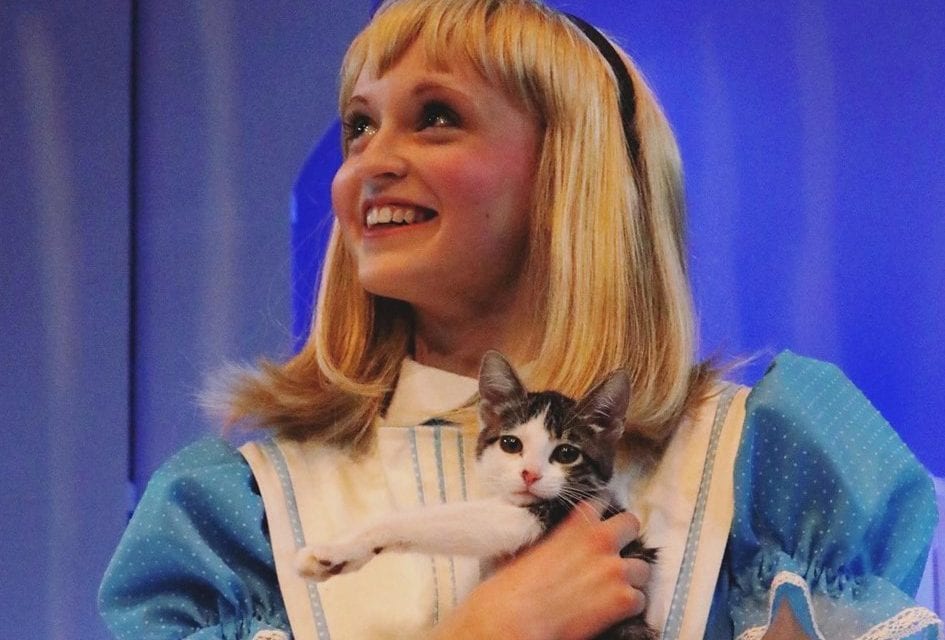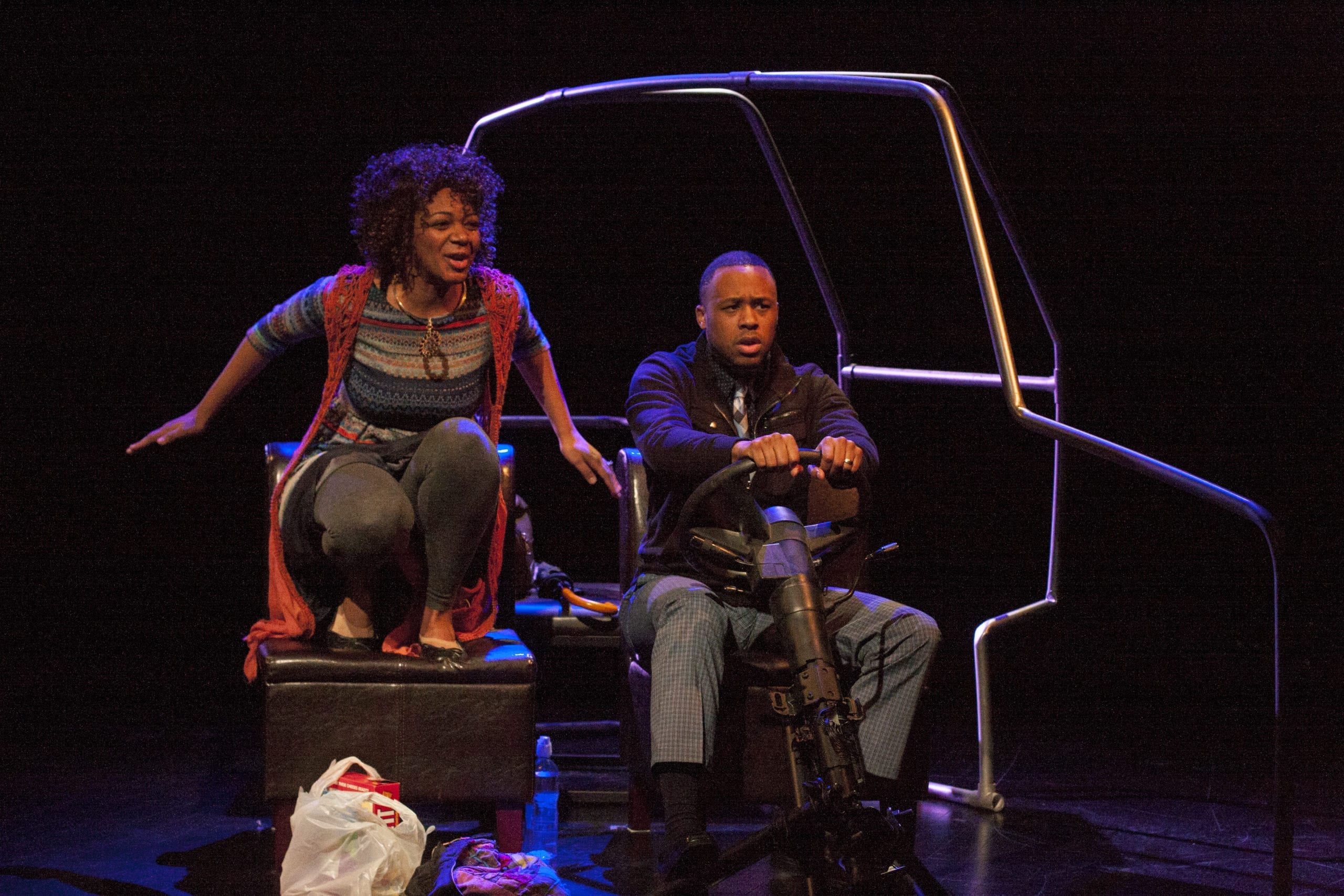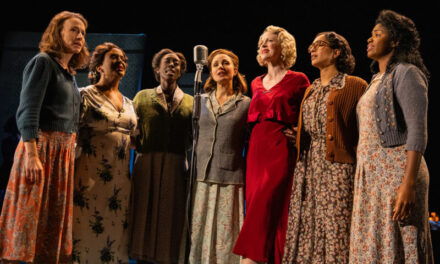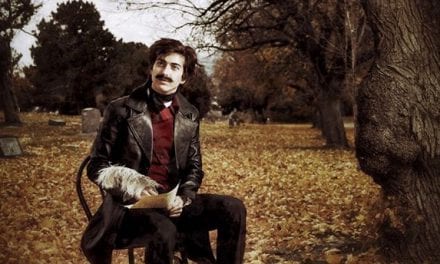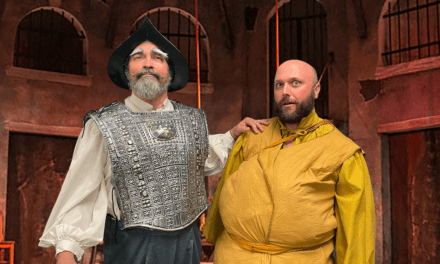SOUTH SALT LAKE — Utah Children’s Theatre’s adaptation of Lewis Carroll’s classic work Alice in Wonderland is a delightful, if somewhat confusing, production. Thanks to the direction of Emily Holmgren, Alice’s dreamy journey into the rabbit hole and its subsequent adventures are staged with the perfect mix of the theatrical and the fantastical. Children and adults alike will be impressed with the production magic on stage but would do well to familiarize themselves with the story prior to attending.

Show closes November 23, 2019.
The story of Alice in Wonderland is perhaps best known to audiences today through its animated and film adaptations, but Utah Children’s Theatre is known for literary adaptions based on the original work, in this case, the book of the same name written in 1865. As in the book, the play opens with a young girl named Alice becoming very bored and tired. As sleep overtakes her, she sees a clothed rabbit with a pocket watch. She runs after him only to fall down a rabbit hole, a type of portal into a mad world full of concoctions that make her shrink and grow, anthropomorphic animals, a baby that turns into a pig, a never-ending tea party, personified playing cards, and a Queen with a penchant for chopping off heads. Just before Alice’s own head is severed, she is woken up to discover that her curious adventures were just a dream.
Elizabeth Myers plays an exceptional Alice, capturing the energy, curiosity, and indignation of youth in every scene. Simply put, Myers carries the production, but not without help. The supporting cast is a strong one under Holmgren’s direction. The chaos of Wonderland is organized into a fast-moving flow on and off stage. Other stand-out performances include Alex Gunn’s impressive physicality portraying both the Caterpillar and the Mad-Hatter and Nels Holmgren’s and Brinton Wilkins’s outrageous transformations into the Cook and the Duchess and Tweedle Dum and Tweedle Dee.
Given the role fantasy plays into Alice’s story, it is no wonder that the book has met its most successful adaptation in film, a medium conducive to special effects. To be sure, putting Alice in Wonderland on stage has its challenges, and part of the fun of this production is discovering the ways in which the artistic staff has found to portray the events in the story. Alice’s fall into the rabbit hole is skillfully conceived with Alice seemingly suspended in mid-air as items swirl around her. To my delight, props change drastic sizes when Alice drinks and eats concoctions that make her shrink and grow: tears become floating waves of cloth and tea cups swirl on their saucers. In every scene there is a visual surprise.
These surprises on stage are enhanced by a deceptively simple set and lighting design by James Parker. The thrust floor is painted in a black and white checkered pattern, and all of the backdrops are also black and white. This choice allows the colors of the costumes and props to be highlighted in the production, especially with the repeated use of the black light to make elements of both costumes and props glow at key times in the play. The colors and black light highly contribute to the dream-like quality of the production.
Costume design by Julie Anderson and properties by Larissa Anderson are exceptional thought-out, especially the caterpillar and the Cheshire Cat, one of my favorite “characters” in the play. In fact, the Cheshire Cat is an elaborate puppet with various parts of his disconnected body manipulated by skilled puppeteers that are a wonder to behold. It was during the Cheshire Cat scene that I was most aware of my five year old’s awe at live theatre. It is one thing to appreciate a good telling of a story but quite another to appreciate the story and the skill with which the magic is created by living, breathing bodies on stage.
Meighan Smith’s hair and make-up design also contributes to the transformation of the stage into Wonderland. The prosthetic mouth pieces on the animal characters, especially the rodents, are incredibly well-done. The only disadvantage of their use comes in the sound quality, which is an issue throughout the performance. There is no apparent use of microphones by any character, which is a detriment to the production. Although most actors seem conscious of vocal projection, a children’s audience is always a bit of a louder audience. Moreover, all of the characters speak in British dialect, and because of the age and origin of the text, many of the lines are phrased in a way that is less accessible to a modern audience, let alone to a modern young audience. Because of this sound issue and the quick manner in which the lines are delivered, I had to work harder to hear and to make sense of a senseless story. Were it not for the exceptional visual elements on stage, plenty of children might get lost in Alice’s dream as well.
All in all, however, Alice in Wonderland is a treat to behold. There are also treats to eat. I always maintain that the performative experience is much more than a staged play. Children remember everything about their time at the theatre, details from the book-mark size tickets to the themed-desserts from the soda shop next door. Utah Children’s Theatre really does do a good job in making their plays memorable, both onstage and off.

This review generously sponsored by a grant from the Salt Lake County Zoo, Arts, and Parks program.

